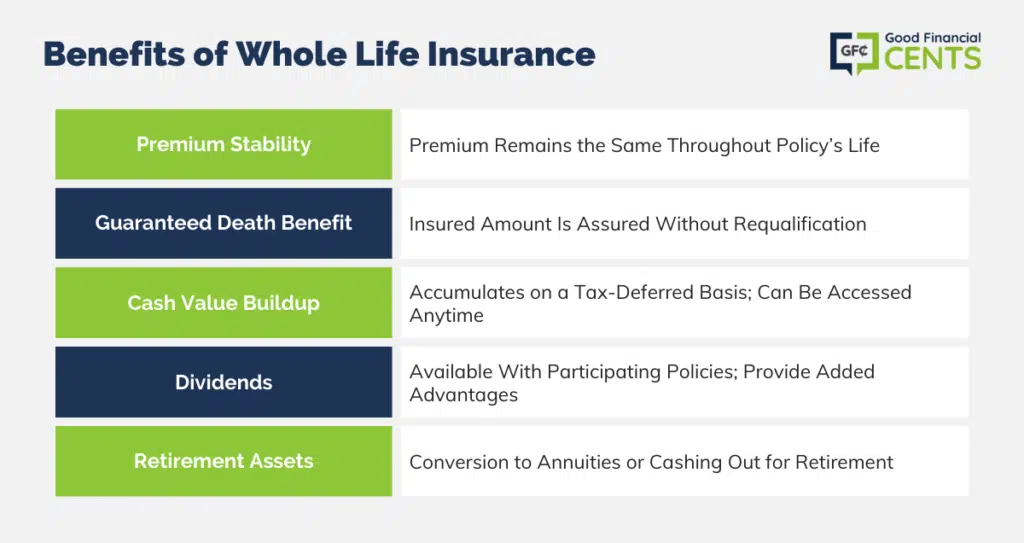Fender-benders are a part of life, right? They’re annoying, they’re time-consuming, but they’re usually not a big deal. You exchange insurance information, file a claim, and move on with your life. What happens, though, when the other driver is blaming you? What if you were injured, and their insurance company won’t cover it? You may need to file a countersuit.
Steps to Countersue for a Car Accident
Countersuing for a car accident is not as simple as filing an insurance claim. There are specific steps you need to take to ensure your case is successful. Here are the steps to countersue for a car accident:
- Gather evidence.
The first step in countersuing for a car accident is to gather evidence to support your claim. This includes collecting witness statements, taking photos of the accident scene, and obtaining a copy of the police report. You should also gather any medical records or other documentation that proves your injuries. - File a complaint.
Once you have gathered evidence to support your claim, you can file a complaint with the court. The complaint should state the facts of the case and the damages you are seeking. - Serve the defendant.
Once you have filed a complaint, you must serve the defendant with a copy of the complaint and a summons. This will notify the defendant of the lawsuit and give them an opportunity to file an answer. - Discovery.
Once the defendant has been served, the discovery process will begin. This is where both parties exchange information and documents related to the case. Discovery can include interrogatories, depositions, and requests for production of documents. - Trial.
If the case cannot be settled during the discovery process, it will go to trial. At trial, both parties will present their evidence and arguments to a judge or jury. The judge or jury will then decide who is liable for the accident and what damages should be awarded.
Counter Sue for Car Accident: A Comprehensive Guide
If you have been served with a lawsuit for a car accident that was not your fault, you may be wondering what your options are. In some cases, it may be possible to file a countersuit. A countersuit is a legal action that you file against the person who sued you. It allows you to seek compensation for your own damages.
Step One: File an Answer to the Original Lawsuit
After being served with a lawsuit, you must file an answer within a certain amount of time. Failure to do so will result in an automatic judgment against you. Filing an answer allows you to deny the allegations in the original lawsuit and state your own claims.
Step Two: Investigate and Gather Evidence
Once you have filed your answer, you need to investigate the accident and gather evidence to support your countersuit. This may include obtaining police reports, witness statements, and medical records. You may also hire an expert witness to testify on your behalf.
Step Three: Drafting and Filing Your Countersuit
Your countersuit should be drafted by an attorney. It should include a statement of facts, a statement of liability, and a demand for damages. You must also file your countersuit with the court and serve it on the other party.
Step Four: Discovery
Once your countersuit has been filed, you will enter a discovery phase. This phase allows both parties to collect evidence and information from each other. This may include interrogatories, depositions, and requests for production of documents.
Step Five: Trial
If your case cannot be settled during discovery, it will go to trial. At trial, you and the other party will present your evidence and arguments to a judge or jury. The outcome of the trial will determine who is liable for the accident and who is entitled to damages.
Conclusion
Filing a countersuit can be a complex and time-consuming process. However, it may be your only option for obtaining compensation if you were not at fault for a car accident. If you are considering filing a countersuit, it is important to speak to an attorney to discuss your options.
Counter Suing for a Car Accident: Everything You Need to Know
If you’ve been involved in a car accident and are facing a lawsuit, you may be wondering if you can counter sue. The answer is yes, you can file a counterclaim against the plaintiff. Here’s what you need to know about the process:
Step One: Gather Evidence
Before you can file a counterclaim, you need to gather evidence to support your case. This may include:
- Police reports
- Medical records
- Witness statements
- Photographs of the accident scene
- Estimates for vehicle repairs or replacement
Step Two: File a Counterclaim
Your counterclaim is a separate lawsuit that you are filing against the plaintiff. It must be filed within the same case as the original lawsuit. Your counterclaim should include the following information:
- A statement of your claim
- A demand for relief (e.g., damages)
- The evidence that supports your claim
Step Three: Step Three: Serve the Counterclaim on the Plaintiff
Once you have filed your counterclaim, you need to serve it on the plaintiff. This means providing them with a copy of the document and filing proof of service with the court.
Step Four: Prepare for Trial
If the plaintiff does not respond to your counterclaim, you may be able to get a default judgment against them. However, if they do respond, the case will proceed to trial. At trial, you will have the opportunity to present your evidence and argue your case.
Step Five: Collect on the Judgment
If you are successful in your counterclaim, you will be awarded a judgment. This judgment may include damages for your injuries, property damage, and other expenses. You will need to take steps to collect on the judgment, such as filing a motion with the court.
Filing a Counterclaim: Additional Tips
- Don’t delay. The sooner you file your counterclaim, the better. There are statutes of limitations that may limit your ability to file a counterclaim later on.
- Get legal help. Filing a counterclaim can be a complex process. It is important to get legal help from an experienced attorney to ensure that your rights are protected.
- Be prepared to negotiate. Most counterclaims are settled before going to trial. Be prepared to negotiate a settlement that is fair to both parties.
Filing a counterclaim can be a daunting task, but it is important to remember that you have rights. If you have been injured in a car accident, don’t hesitate to consult with an attorney to discuss your options.
Counter Suing for a Car Accident
If you’ve been involved in a car accident that wasn’t your fault, you may be wondering if you can counter sue the other driver. The answer is yes, you can countersue for a car accident. A countersuit is a legal action that you file in response to a lawsuit that has been filed against you. In a car accident case, you can file a countersuit to seek compensation for your injuries, property damage, and other losses.
Step One: Gather Evidence
The first step in filing a countersuit is to gather evidence to support your claim. This evidence can include:
Step Two: File a Counterclaim
Once you have gathered your evidence, you can file a counterclaim with the court. The counterclaim should include a statement of your claims against the other driver, as well as a demand for relief. The relief you request can include compensation for your injuries, property damage, and other losses.
Step Three: Serve the Defendant
Once your counterclaim is filed, you must serve it on the defendant in the original lawsuit. This means that you must give the defendant a copy of the counterclaim and a summons. The summons will tell the defendant that they have been sued and that they must file an answer to the counterclaim within a certain period of time.
Step Four: Go to Court
If the defendant does not file an answer to your counterclaim, you may be able to get a default judgment against them. This means that the court will rule in your favor without a trial. However, if the defendant does file an answer, the case will go to trial. At trial, you will have the opportunity to present your evidence and argue your case. The judge or jury will then decide who is liable for the accident and what damages you are entitled to.
Step Five: Collect Your Judgment
If you win your case, the court will enter a judgment in your favor. The judgment will specify the amount of damages that you are entitled to. You can then collect your judgment by having the defendant’s wages garnished or by seizing their assets.
Counter Sue for Car Accident
Being involved in a car accident can be a traumatic experience. It can be even more frustrating if you believe that the other driver was at fault. In this situation, you may be wondering if you can countersue for a car accident. The answer is yes, you can countersue for a car accident. A countersuit is a lawsuit that is filed in response to another lawsuit. In the case of a car accident, you may file a countersuit if you believe that the other driver was at fault and that you are entitled to compensation for your injuries or damages.
There are several steps involved in filing a countersuit for a car accident. The first step is to gather evidence to support your claim. This may include witness statements, police reports, and medical records. Once you have gathered your evidence, you will need to file a countersuit with the court. The court will then set a hearing date, at which time both sides will present their evidence and arguments.
If you are successful in your countersuit, you may be awarded compensation for your injuries or damages. This compensation may include medical expenses, lost wages, and pain and suffering. In some cases, you may also be awarded punitive damages, which are designed to punish the other driver for their negligence.
Step Four: Discovery
During discovery, both sides exchange evidence and information. This is crucial for building your case. Each side will have the opportunity to request documents, interrogate witnesses, and take depositions. Discovery can be a lengthy process, but it is an important step in preparing for trial. If you do not comply with discovery requests, the court may impose sanctions, such as striking your pleadings or entering a default judgment against you.
Step 5: Trial
If the case cannot be settled during discovery, it will proceed to trial. At trial, both sides will present their evidence and arguments to a jury. The jury will then deliberate and decide whether the defendant is liable for the plaintiff’s injuries or damages. If the jury finds the defendant liable, it will then award damages to the plaintiff. The amount of damages will depend on the severity of the plaintiff’s injuries or damages, as well as the defendant’s degree of fault.
Trials can be stressful, but they are also an important part of the legal process. If you are involved in a car accident, it is important to speak to an attorney to learn more about your rights and options. An attorney can help you file a countersuit, gather evidence, and prepare for trial.
Step Five: Trial
If you can’t make amends with the defendant, you’ll have to go to court. That’s when things can get dicey. You’ll be up in front of a judge or jury, and it’s all about proving who’s right and who’s wrong. It’s like playing a game of chess, except the stakes are a lot higher.
You’ll need your evidence in order, and you’ll need witnesses on your side. You’ll also need an attorney. If you can’t afford one, the court may appoint one for you. Then, you’ll present your case to the jury. You’ll tell your story, call your witnesses, and present your evidence. The defendant will do the same.
After both sides have presented their cases, the jury will deliberate. They’ll decide who’s right and who’s wrong. Now, don’t be discouraged if you don’t win your case. It’s not always easy to prove who’s at fault in a car accident. But even if you don’t win, there’s still a chance you can recover some of your losses.
If you’ve been injured in a car accident, you may be able to file a countersuit against the other driver. This is a separate lawsuit that you file in addition to your original claim. In your countersuit, you can seek compensation for any damages that you’ve suffered as a result of the accident, such as medical expenses, lost wages, and pain and suffering.
Filing a countersuit can be a complex process, so it’s important to speak to an attorney to discuss your options. An attorney can help you determine if you have a valid claim and can assist you with the process of filing your countersuit. You should also keep in mind that the statute of limitations for filing a countersuit is typically shorter than the statute of limitations for filing an original claim, so it’s important to act quickly if you’re thinking about filing a countersuit.




Leave a Reply